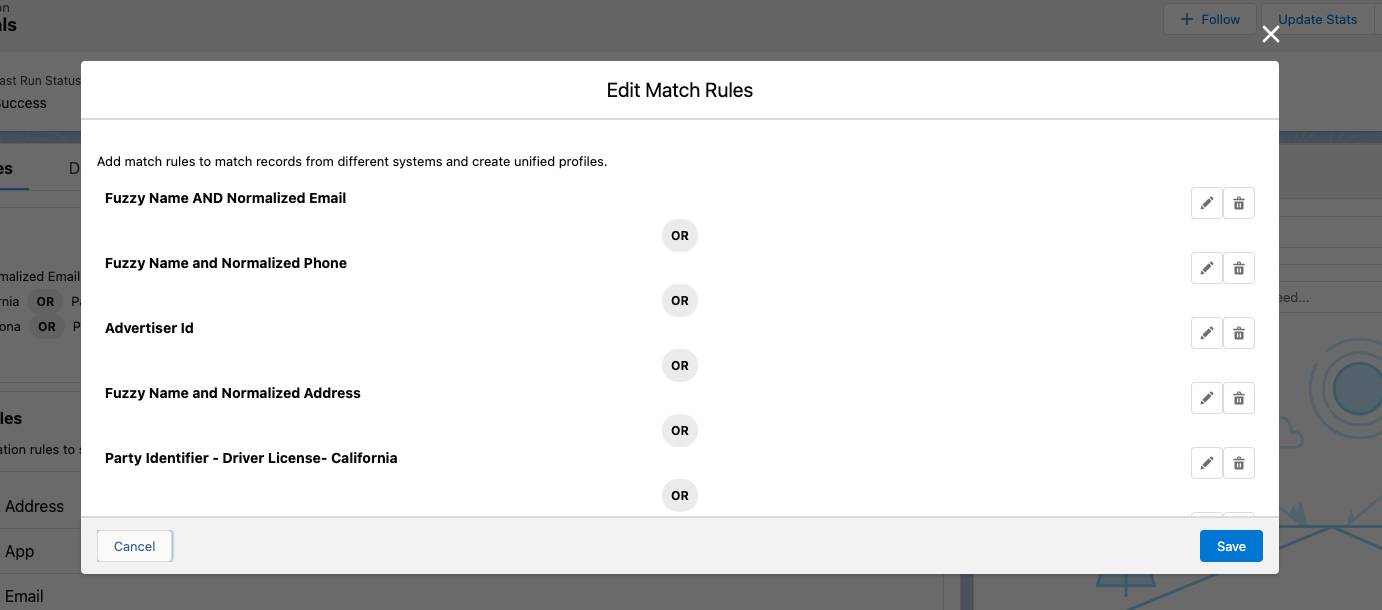Resolve Identities and Troubleshoot
Learning Objectives
After completing this unit, you’ll be able to:
- Match your data with the right identity.
- Resolve any other issues you encounter with data mapping.
Make It Right
As you can tell from the previous units, your Data Cloud account involves ingesting and manipulating a huge amount of data. And, like everything else in reality, you run into exceptions or edge cases that don’t neatly fit into the proper place. While Data Cloud can’t help you with every outlier in your personal reality, we can give you the tools to automatically resolve these errors before they cause bigger problems. We also provide the steps you should try first when troubleshooting. It’s the right thing to do, after all.
Identity Resolution
Now that mapping to the Individual and Contact Point Email objects has been completed, your admin can configure the identity resolution rules by going into Data Cloud Setup under the Gear icon. For this use case in particular, we will set the Match Rules to match on Exact Email since we would like the email addresses from the Marketing Cloud Engagement email bundle to merge with the email addresses from the runner profiles where appropriate.

Under the Reconciliation Rules section, you can set the rules to work on Most Frequent or provide a Source Sequence. In the checklist from unit one, we suggested you indicate if one source is considered more reliable than another in the case where multiple sources provide overlapping information. If you made a note that there was an ordered hierarchy preferred, the sources can be ranked here.
Troubleshooting Steps
Warren already managed the Individual ID object requirements, but he also keeps some troubleshooting steps in mind as he maps out his data streams.
- Make sure you connect fields with similar data types, such as text, number, or date. Otherwise, you may need to transform the data using a formula before you map the values.
- When you map a data object with the Engagement category, you must also map the Event Time Field.
- A data model object inherits its Category from the first data source object that maps to it. Once the data model object has its category set, all subsequent data source objects mapping to it must have the same category.
Now Warren has successfully introduced all the data streams into the data model layer. He created custom fields on existing standard objects as needed and he also created his own new custom object and related it back to the standard Individual object. With mapping complete, identity resolution configured, and all relationships defined, Warren can now let Isabelle Givens, NTO’s digital marketing manager, take the torch.
This whole process may seem like a lot of work, and to be fair, it is. But this initial effort helps you manipulate and standardize all of the information coming into your Data Cloud account and make it as useful as possible. A little effort here goes a long way towards accurately modeling your data and easing the way for future marketing tasks.
